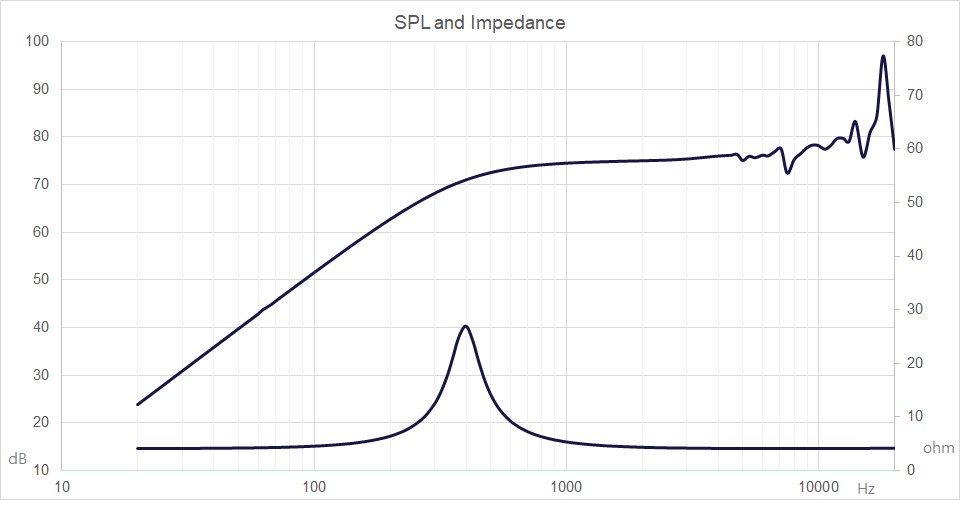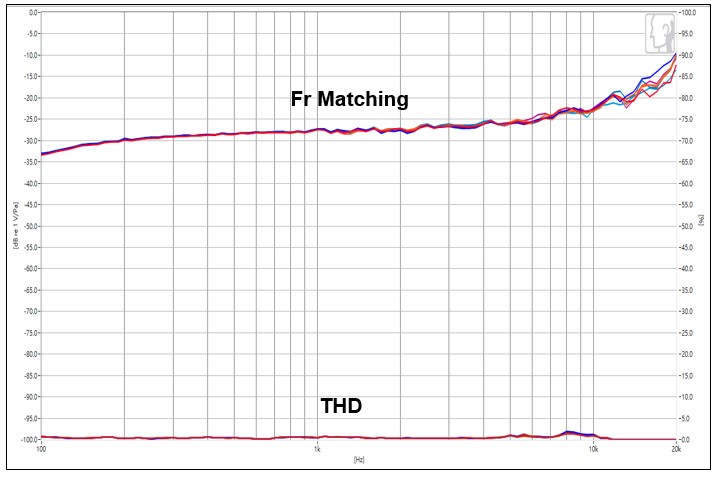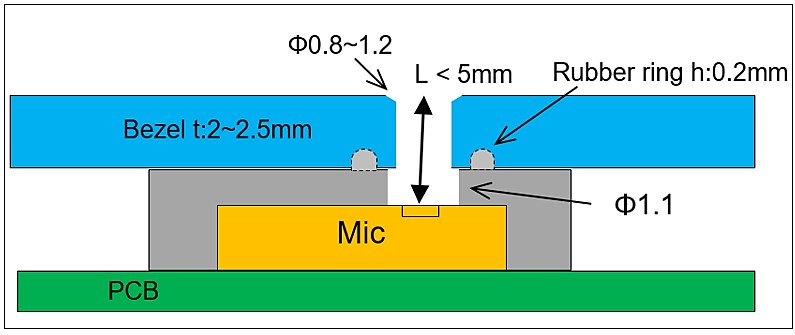技術文章
-
聲學模組設計實務問答:從纖薄揚聲器結構到麥克風迴聲抑制策略

在 COVID-19 大流行期間,人們在家的時間越來越長,導致對相關產品的需求增加,例如可穿戴設備、筆記本電腦、視頻會議設備、智能揚聲器等。它們都有一個共同點:揚聲器和麥克風都是音頻和通信的關鍵組件。
問:如何為空間不足的設備設計更纖薄的揚聲器?
A:以筆記本電腦(或觸摸屏)為例,大多數為筆記本電腦設計或組合在纖薄表面下的揚聲器都需要縮小高度。 相反,揚聲器的長度和寬度必須加長以確保 SPL 性能。 但是,它通常需要兩個或多個電機(音圈),並且它們也使成本更高。 有一個解決方案:我們可以使用FPC(柔性印刷電路)製作的音圈,它對揚聲器的長度和寬度的限制較少。 FPC音圈揚聲器應設計適當的磁路和結構,易於開發相對較長和較薄的矩形揚聲器。

圖一、FPC音圈喇叭

圖2. 1瓦0.5米5cc封閉箱體FPC音圈揚聲器模擬頻率響應(揚聲器:L50mm*W4.5mm*H12mm)
問:如何在揚聲器附近設計麥克風而不引起嘯叫或迴聲?
答:以下一些提示:
1. Mic Array:Mic Array由2~8個麥克風組成,結合DSP&Beamforming算法; 它可以實現語音遠距拾音和降噪,以提高語音通話質量。
2. Mic Sensitivity & Frequency:Mic Array每個麥克風的靈敏度應該接近Fr,理想情況下為±1dB,這樣可以減少DSP在計算時的偏差,音道結構的總長度不應超過5mm 並避免麥克風通道的共振頻率<12KHz。

圖 3. 麥克風頻率響應匹配。

圖 4. 麥克風橡膠座和擋板
3. Mic Phase:每個Mic的相位要靠得越近越好,最好是±5∘,這樣可以減少DSP計算時的偏差時間,保證Beam & Directionivity的準確性。
4、麥克風膠座密封:麥克風膠座與Bezel必須無縫密封,隔音必須至少達到20dBSPL,以防止內置揚聲器的聲音通過橡膠間隙進入麥克風的聲音通道。
<5、麥克風與揚聲器的位置和防震:考慮到揚聲器的放大和麥克風的AEC信號處理,通常我們會把揚聲器放在中間,而麥克風要遠離揚聲器,麥克風也需要使用 橡膠的防震和氣密性。 揚聲器的外殼和螺絲孔應使用海綿或橡膠支架固定以避免振動,否則麥克風會收到揚聲器的THD信號,影響AEC的質量。

 詢價
詢價